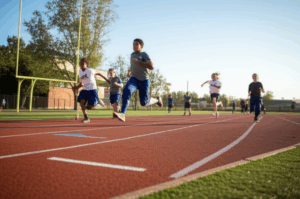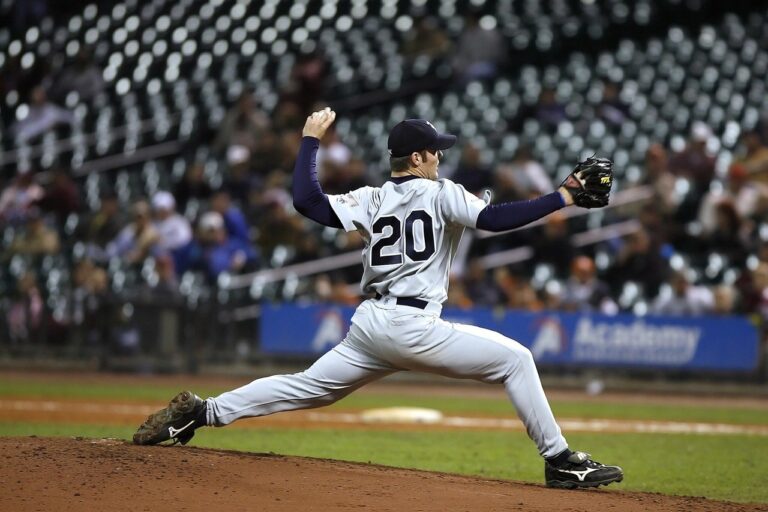The intense physical demands of baseball, particularly for pitchers, lead to unique physiological adaptations. Recent studies are shedding light on how the repetitive, high-intensity motions of throwing impact the arterial structure and function of college baseball players. This article delves into the exercise-induced arterial adaptations seen in these athletes, exploring the potential benefits and risks associated with these changes.
Asymmetrical Adaptations in the Brachial Artery
Research from the University of Tsukuba indicates that the arterial structure and function of athletes undergo sport-specific adaptations. In baseball, the repeated, high-intensity throwing motion, especially in pitchers, can lead to asymmetrical changes in the brachial arteries of the dominant and non-dominant arms.
Dominant vs. Non-Dominant Arm Differences
A study involving college baseball players, including both pitchers and fielders, revealed that pitchers exhibit significant differences in blood flow and arterial diameter between their throwing and non-throwing arms. These changes are not as pronounced in fielders, highlighting the unique impact of the pitching motion.
- Brachial Artery Diameter: The diameter of the brachial artery, a major blood vessel in the upper arm, tends to increase in both arms of baseball players compared to non-athletes. However, pitchers often show a more substantial increase in the diameter of the brachial artery in their dominant arm.
- Blood Flow Volume: Similarly, the volume of blood flow is often higher in the dominant arm of pitchers, suggesting that the body is adapting to the increased demands placed on that limb.
- Blood Flow Velocity: Blood flow velocity, the speed at which blood moves through the artery, also shows changes in response to training and is often higher in the throwing arm of pitchers.
Implications for Performance and Health
These findings suggest that the repetitive, forceful throwing action leads to remodeling of the brachial artery in the throwing arm. This adaptation is likely a response to the increased blood flow demands during pitching. However, the long-term implications of these asymmetrical changes require further investigation. While these adaptations may initially support athletic performance, they could also lead to potential risks if the vascular system is excessively stressed.
The Impact of Baseball on Overall Arterial Health
Beyond the brachial artery, baseball training impacts the cardiovascular system in various ways, leading to both beneficial and potentially detrimental adaptations.
Positive Adaptations
- Cardiovascular Training: Baseball involves bursts of high-intensity activity, such as running, throwing, and swinging, contributing to cardiovascular fitness. Regular play helps strengthen the heart muscle and improve lung capacity, vital for overall health.
- Increased Blood Flow: Exercise, in general, is known to improve blood flow and artery function. The increased blood flow during physical activity helps keep arteries wider and more flexible, reducing blood pressure.
- Muscle Strength: The various motions of baseball, such as throwing and batting, develop strength in the arms, legs, and core, which can indirectly promote better vascular health by supporting an active lifestyle.
- Endurance: While baseball is not primarily an endurance sport, consistent training improves overall cardiovascular endurance.
- Reduced Resting Heart Rate: With regular training, athletes tend to develop a lower resting heart rate, an indication of improved cardiovascular efficiency.
Potential Risks
- Thoracic Outlet Syndrome (TOS): The repetitive overhead motions in baseball, particularly pitching, can contribute to the development of Thoracic Outlet Syndrome. TOS involves the compression of nerves or blood vessels in the space between the collarbone and the first rib. This can result in pain, numbness, and restricted blood flow in the affected arm.
- Arterial Compression: The extreme ranges of motion required in throwing can lead to positional compression of arteries, particularly in the shoulder and arm. This compression can reduce blood flow, potentially causing discomfort and long-term vascular issues.
- Decreased Blood Flow: Studies have indicated that pitchers can experience decreased blood flow in the throwing arm, especially when placed in a provocative shoulder position. This could be a sign of potential vascular compromise due to the repetitive stress of throwing.
- Digital Ischemia: Catchers, in particular, are at risk of hand-related vascular problems due to the repetitive trauma caused by catching baseballs. This trauma can lead to digital ischemia, which is a reduction in blood flow to the fingers.
- Axillary Artery Thrombosis: In rare cases, extreme throwing motions can cause blood clots in arteries, as seen in case reports of major league pitchers experiencing axillary artery thrombosis.
- Aortic Dilation: Some research suggests that athletes, including those in high-intensity sports, may experience aortic dilation, which is the widening of the aorta. Though typically not to a concerning degree in younger athletes, this warrants monitoring due to the potential long-term consequences.
Blood Flow Restriction Training
Blood flow restriction (BFR) training has emerged as a novel method for enhancing strength and performance in baseball players. BFR involves applying a cuff around the upper arm or leg to restrict blood flow during exercise. This technique has been shown to improve muscle strength at lower exercise intensities.
- Enhanced Strength Gains: Studies indicate that BFR training can lead to significant increases in muscle strength and endurance in baseball pitchers.
- Reduced Risk of Injury: Because it allows athletes to train with lighter weights, BFR can help reduce the risk of overtraining and injury.
- Improved Performance Metrics: BFR training can improve pitching metrics, such as fastball velocity and spin rate.
The Importance of Monitoring and Adaptability
Understanding the cardiovascular changes in college baseball players is crucial for promoting long-term health and optimizing performance. Regular monitoring and adaptability in training regimens are essential.
Recommendations for Athletes and Coaches
- Regular Checkups: Athletes should undergo regular medical checkups to monitor their cardiovascular health and identify any potential issues early.
- Balanced Training: Coaches should develop training programs that incorporate a balance of strength, cardiovascular fitness, and recovery to avoid excessive stress on the vascular system.
- Proper Technique: Emphasis on proper throwing mechanics can help minimize stress on the shoulder and arm, potentially reducing the risk of arterial compression and related issues.
- Listen to the Body: Athletes should pay attention to any signs of discomfort, pain, or numbness in their arms or hands and seek medical attention if necessary.
- Recovery: Adequate rest and recovery strategies should be integrated into training routines, giving the body time to adapt and repair from the physical demands. Cold-water plunges after training may assist in reducing inflammation and muscle damage.
- Personalized Training: Training programs should be tailored to individual needs and positions, recognizing the unique demands placed on pitchers, catchers, and other players.
Future Research
Further studies should focus on:
- Longitudinal Studies: Tracking arterial changes in baseball players over extended periods to fully understand the long-term impacts of their training regimens.
- Individual Variability: Investigating why some athletes experience more pronounced arterial adaptations than others.
- Preventive Measures: Developing and evaluating preventive strategies to minimize the risks of TOS and other vascular problems in baseball players.
Conclusion
The arterial adaptations seen in college baseball players are a complex interplay of positive and negative changes resulting from the demands of the sport. While baseball training can improve cardiovascular health through increased blood flow and muscle strength, it also poses unique risks, especially for pitchers, who can develop issues such as arterial compression and TOS. By understanding these adaptations and implementing appropriate monitoring and training strategies, athletes, coaches, and medical professionals can work together to promote both performance and long-term health. Further research into these physiological adaptations is essential to ensure that young athletes can continue to enjoy the benefits of baseball while minimizing any potential harm.







